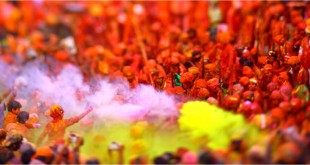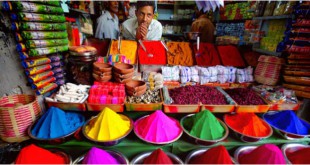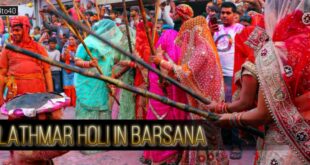Now Langar from a major institutional forms of India and become a part of the Sikh Gurdwara. Basically, Langar means to Provide food to all devotees and pilgrims. The Langar in Gurdwara’s is a community kitchen. Every Sikh is expected to take part in the running of the kitchen. Community has pay for the expenses, bring provisions or personally contribute labor of love, by cleaning utensils, fetching water or fuel, or taking a hand in cooking and distributing food. Langar is one of the corner of the Sikh religion and a symbol of equality. Every Sikh is expected to contribute to it either by donating foodstuff or by participating in the cooking and distribution of the food.
Guru Nanak set up a Gurdwara of bread at Kartar Pur Where people brought corn and fuel, and worked together to prepare a common meal for the whole community. Nanak took practical steps to break the vicious hold of caste by starting free community kitchens – Guru ka langar – in all centers and persuading his followers, irrespective of their castes, to eat together.
Guru Angad extended the Langar and personally served in it. Langar in the Guru Granth Sahib Ji “The Langar- the kitchen of the Guru’s Shabad has been opened, and its supplies never run short. Whatever His Master gave, He spent; He distributed it all to be eaten. The Praises of the Master were sung, and the Divine Light descended from the heavens to the earth. Gazing upon you, O True King, the filth of countless past lives is washed away. The Guru gave the True Command; why should we hesitate to proclaim this? His sons did obey his word; they turned their backs on him as Guru. These evil hearted ones became rebellious; they carry loads of sin on their backs. Whatever the Guru said Lehna did, and so he was installed on the throne. Who has lost, and who has won? He who did the work, is accepted as Guru; so which is better — the thistle or the rice? The Righteous Judge of Dharma considered the arguments and made the decision. Whatever the True Guru says, the True Lord does; it comes to pass instantaneously. Guru Angad was proclaimed, and the True creator confirmed it. Nanak merely changed his body; He still sits on the throne, with hundreds of branches reaching out. Standing at his door, his followers serve him; by this service, their rust is scraped off. He is the Dervish- the Saint, at the door of his lord and master; he loves the True name, and the Bani of the Guru’s word. Balwand says that Khivi, the Guru’s wife, is a noble woman, who gives soothing, leafy shade to all. She distributes the bounty of the Guru’s Langar; the kheer — the rice pudding and ghee, is like sweet ambrosia. The faces of the Guru’s Sikhs are radiant and bright; the self-willed Manmunkhs are pale, like straw. The master gave his approval, when Angad exerted him self heroically. Such is the husband of mother Khivi; he sustains the world.”
 Kids Portal For Parents India Kids Network
Kids Portal For Parents India Kids Network







